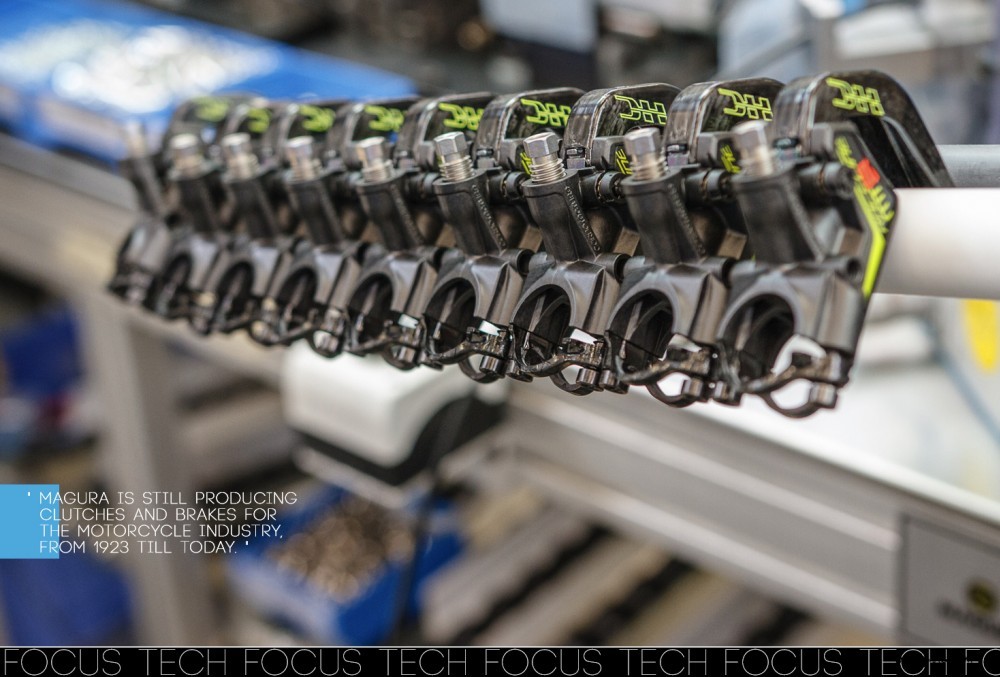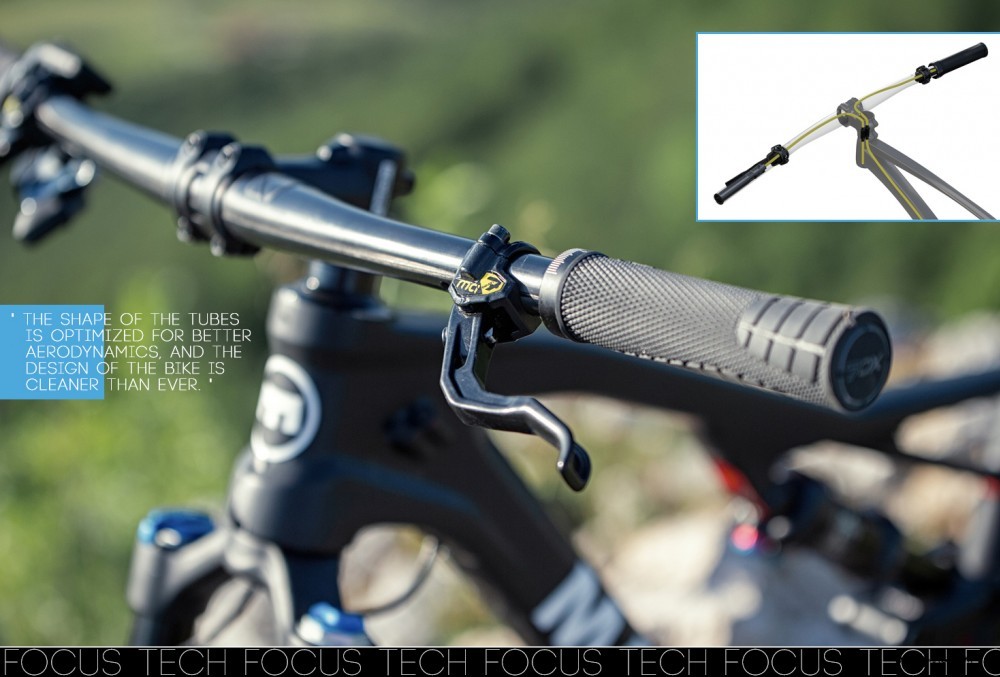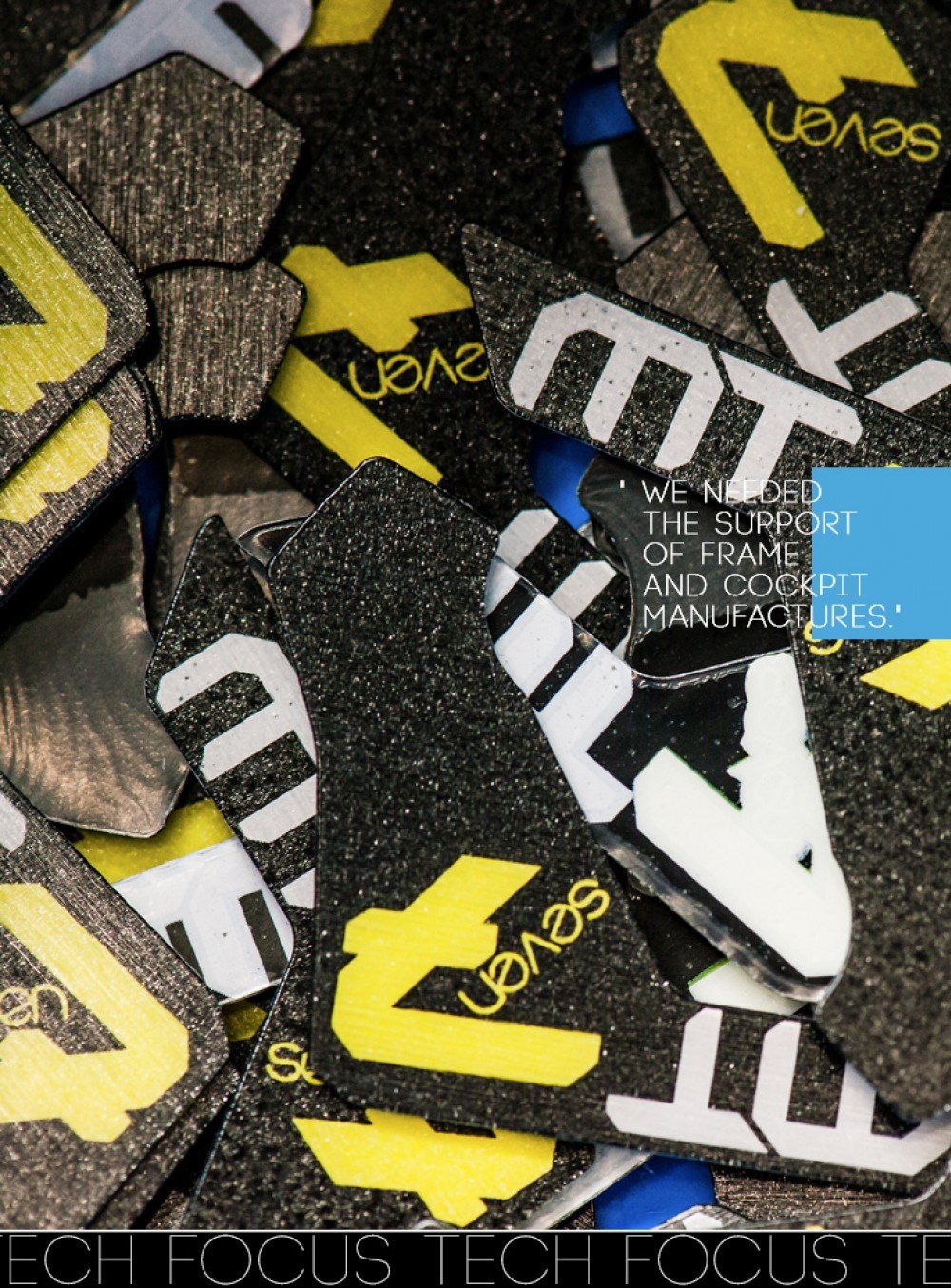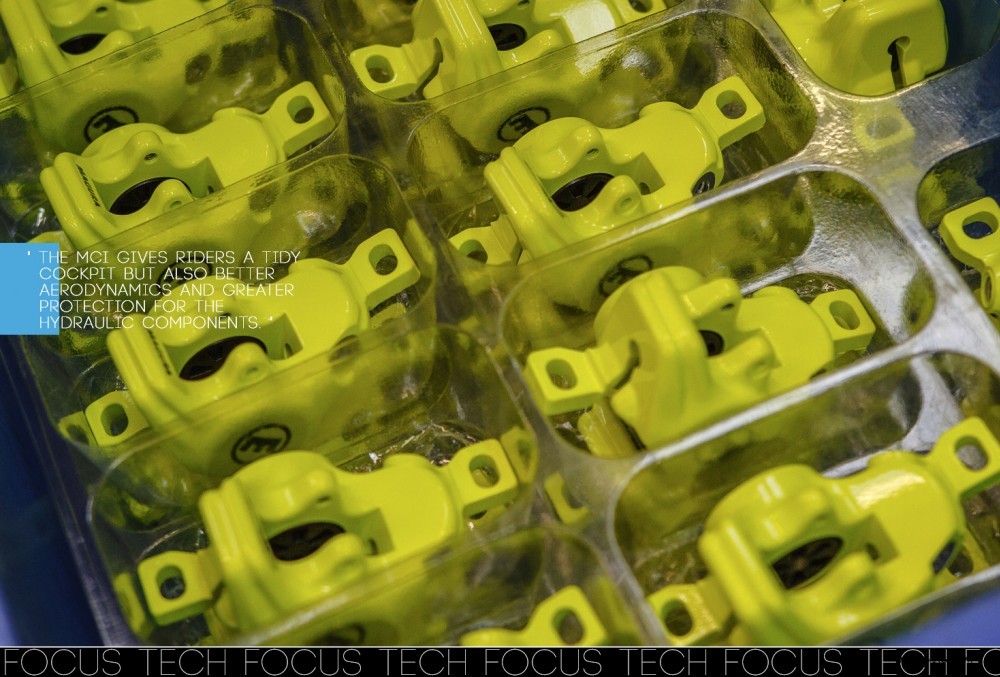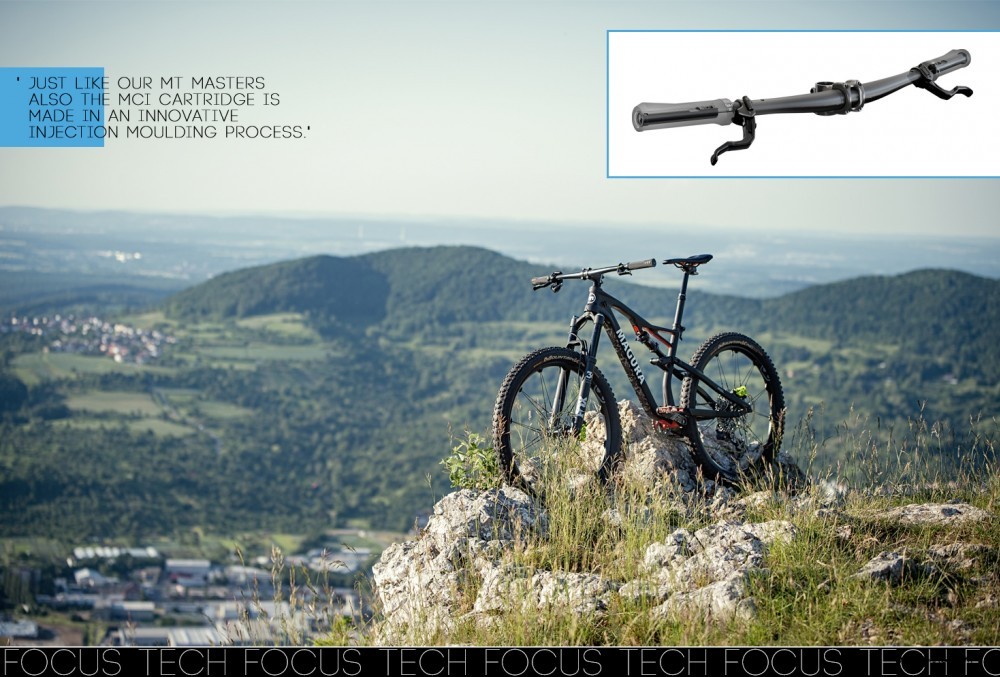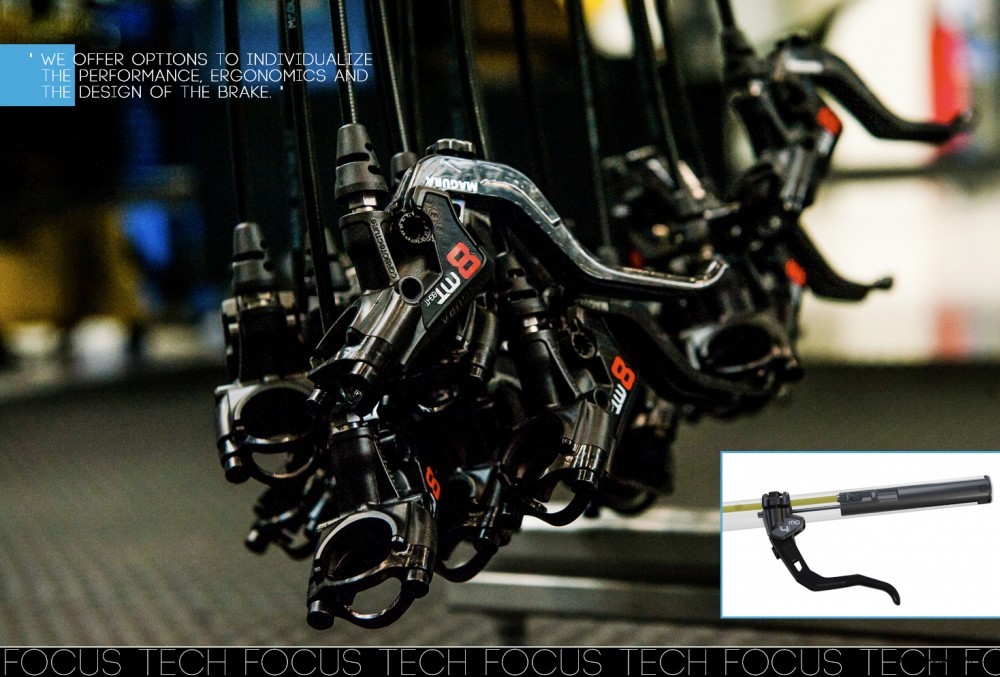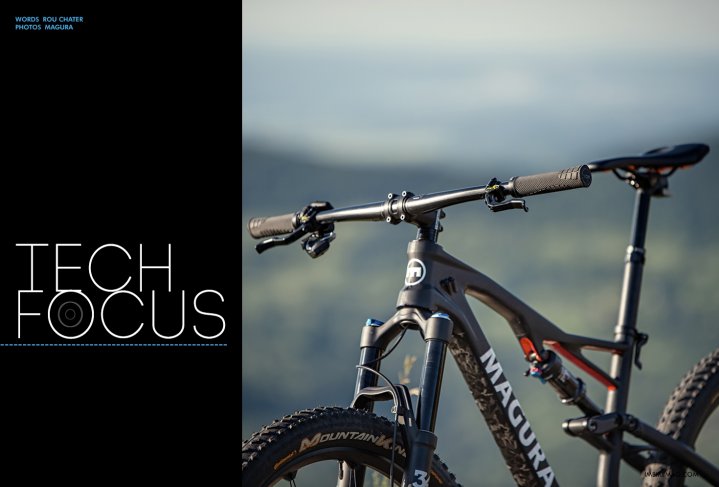
Tech Focus - Magura MCi
Issue 63 / Tue 25th Feb, 2020
A real head turner at Eurobike, the MCi cockpit from Magura seeks to do away with all cables on your bars, it looks freaky, uses some really intelligent engineering and we get the low down right here from Michael Ruopp.
We sit down Michael Ruopp from the R&D Team at MAGURA to talk about the incredible head-turner at Eurobike, the new MCi system. Mountain bike technology is always progressing, and this new development might be the ultimate way to clean up your cockpit once and for all!
MAGURA has been at the forefront of brake technologies for a long time, can you tell us a little bit about the history of the brand and how you got started?
MAGURA started in 1893 in Germany with gear racks for steering columns – still a symbol in the company´s logo. For decades now MAGURA has been a reliable manufacturer for the motorcycle industry. Gustav Magenwirth, the founder of the company, invented one of the milestones in the company’s history, the straight-pull control lever blade for motorcycles, which led to cooperation with BMW in the motorcycle sector that still exists today. MAGURA is still producing clutches and brakes for the motorcycle industry, from 1923 till today.
Over the last 30 year, MAGURA has transformed itself from a newcomer in the bicycle sector with the development of the first hydraulic brakes in 1987 to a technology leader in the industry. All without losing the positive qualities of a family business, trusting cooperation, committed employees and sustainable and future-oriented manufacturing processes. However, no question, MAGURA’s heritage is in the motorcycle sector. Today the company is lead by Fabian Auch, great-grandson of Gustav Magenwirth and fourth generation of the family.
In recent years we’ve seen a significant progression in terms of the technologies you are offering, the Vyron Elect for instance, who’s been pushing this development at the brand, has it been a team effort?
In the last decades, MAGURA has transformed from a newcomer in the bicycle sector to a technology leader. All around the idyllic Bad Urach at the foot of the Swabian Alb, high-tech components are produced from materials developed and produced in-house. Since its start in 1893, MAGURA was always relying on our own R&D know-how. Together with the company subsidiary Bebro electronics MAGURA was able to push the boundaries a bit further with the first wireless remote actuated dropper seat post. Another in-house development and result of the company´s teamwork.
The latest head-turner from the brand is the MCi technology, it caused a stir at Eurobike, and it’s incredibly different, where did the idea come from, what was the critical driver for removing cables at the handlebar?
The first concept idea is based on a cable-actuated MAGURA motorcycle brake master that was fully integrated into a cockpit. This cockpit from 1926 has already hidden the brake cables inside the handlebar. At its time a really unique design.
This motorcycle product was an essential cornerstone for future developments.
Our big MCi idea to hide all the cables inside the handlebar received considerable support in the bicycle industry. Integration is a driving topic for many future bicycle concepts. On road bikes all cables are already hidden inside the handlebar and frame, the shape of the tubes is optimized for better aerodynamics, and the design of the bike is cleaner than ever.
However, also in the mountain bike segments, integration becomes an important topic. Batteries are hidden inside the frame and cables are routed invisibly through the frame.
To hide the brake cables inside the handlebar was the next logical step and start of our MAGURA Cockpit Integration development. But yes, our first idea is based on a MAGURA product from 1926.
Has anyone else been involved in the development at all?
After our first idea, we started the development with some partner brands from the bicycle industry. To develop an innovative product like the MCi we needed the support of frame and cockpit manufactures. Initially, the MCi will only be reserved for OE partners. MAGURA will act as MCi system supplier during the development and will specify the components such as handlebars, stem unit and cable routing together with the respective bicycle manufacturer.
Is the concept purely aesthetic, such as internal cable routing in the bike frame, or does it actually add any performance benefits?
With no external cables, the MCi gives riders a tidy cockpit but also better aerodynamics and greater protection for the hydraulic components. The hydraulics of the brake is now separated from the lever and protected in the case of a crash.
Besides the improved details, it was always our goal to develop a concept with the best possible braking performance. The dimensions of the expansion reservoir and the piston diameter of the MCi correspond to the dimensions used in the MAGURA MT series, giving the MCi the same stability and braking force as conventional MAGURA MT brakes.
What’s the development process been like, how long has it taken from inception to getting the product to market?
We started our development process in early 2018. One of the biggest challenges was the implementation of a hydraulic pull-type cylinder. In contrast to standard brakes, we couldn´t use a push-type cylinder anymore. Furthermore, we needed to integrate the oil reservoir as well inside the handlebar and respectively, the cartridge. But space was limited because we had no alternative than using the standard dimensions for handlebars (22.2 mm).
During the development of the hydraulic unit, our team relied on in-house motorcycle know-how. The MCi functions in the same way as a retrofit hydraulic clutch for motorcycles – also a pull-type cylinder. The difficult implementation despite the limited package space was only possible with our well-known plastic injection moulding abilities. Just like our MT masters also the MCi cartridge is made in an innovative injection moulding process.
After we finished our first functional models, we started working with our first industry partner Kalkhoff Bikes in mid-2018. The first serial production bikes with MCi will be available in summer 2020.
A lot of riders are going to be asking about the handlebars. Obviously, you’ll be making them but will other brands start to offer set-ups that will be compatible?
Initially, the MCi will only be reserved for OE partners. MAGURA will act as MCi system supplier during the development and will specify the components such as handlebars, stem unit and tubing routing together with the respective bicycle manufacturer. A wide range of handlebar dimensions are possible though.
Aftermarket options with a full package of handlebar, stem and brake are still to be discussed.
How have you dealt with the weak spot created in the handlebar, does the brake lever add any strength or has the handlebar been beefed up?
The handlebar and other parts are designed to match the new requirements of the MCi. The handlebar has been reinforced to pass all tests and ISO guidelines, as well as the guidelines for E-Bikes.
What if the brake needs bleeding, or develops an issue, what is the maintenance like?
User-friendly service and maintenance solutions were a big goal for our development. The MCi is practically maintenance-free like our MT series. Brake bleeding is carried out using the proven Easy Bleed Technology with MAGURA Royal Blood and a bleed screw at the handlebar end.
For easy maintenance, the MCi is the first MAGURA product using the
new Easy Link cable coupling. The new Easy Link system is a unique plug-in connector that links the cockpit unit and tubing. During a service, the cockpit unit can be easily separated from the cable within the frame. This makes the change of a hydraulic cartridge easier because the rear part with the calliper and tubing can stay inside the frame during maintenance.
The Easy Link connection system looks really interesting, was that a necessity to make the brake easy to work with, how does it work?
The Easy link is a crucial part of our MCi. Thanks to the coupling, we can pre-install the brake inside the handlebar before we connect it to the frame without using any tools or screws.
We can deliver the cockpit, and calliper separated to the bicycle manufacturer to make the installation and cable routing as easy as possible. The installation and maintenance without a coupling would have been too difficult.
The MAGURA Brake range is one of the most extensive on the market, with totally interchangeable parts so you can tune the brake exactly how you want it from the lever to the calliper and everything in between, will this system be integrated into that range moving forward?
The MCi is available with MAGURA MT 2-piston and 4-piston brake callipers or our trail combination. In line with our #customizeyourbrake philosophy, we offer options to individualize the performance, ergonomics and the design of the brake. Our customers can choose between different callipers, rotors, brake pads and even two different lever options for the MCi.
What’s next for brakes, might we ever see an electric wireless mountain bike brake in the industry perhaps?
Initially, it sounds a bit scary to think about a wireless brake and to put your health in the hands of electronics. But if we take a look in the automotive industry, this is already standard. Electronic brake servos and servo-assisted steering are already safety relevant for cars.
We always look at new technologies and think about it.
Thanks for taking the time to talk to us!
Videos
By Rou Chater
Rou Chater is the Publishing Editor of IMB Magazine; he’s a jack-of-all-trades and master of none, but his passion for bikes knows no bounds. His first mountain bike was a Trek 820, which he bought in 1990. It didn’t take him long to earn himself a trip to the hospital on it, and he’s never looked back since. These days he’s keeping it rubber side down, riding locally and overseas as much as possible.




